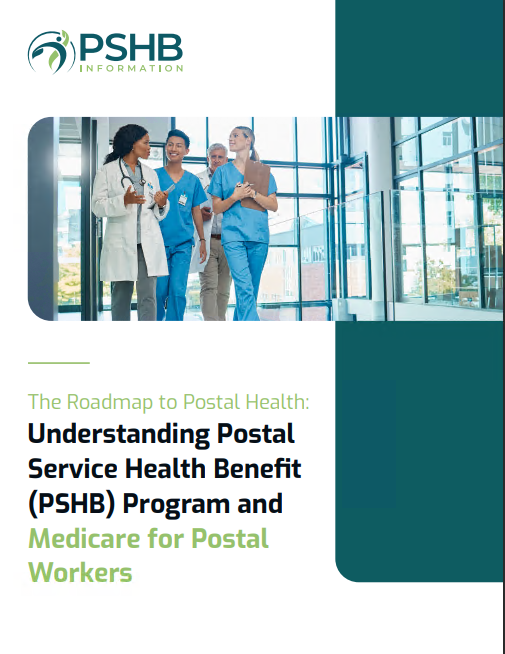Key Takeaways
-
Medicare Part B costs and coverage options play a pivotal role in your healthcare planning, especially for those transitioning to Postal Service Health Benefits (PSHB).
-
Understanding premiums, deductibles, and coordination with Medicare ensures you maximize your benefits and minimize out-of-pocket expenses.
Why Medicare Part B Matters for PSHB Enrollees
If you’re covered under the Postal Service Health Benefits (PSHB) program, Medicare Part B significantly impacts your overall healthcare strategy. For Medicare-eligible Postal Service annuitants, Part B enrollment is often essential for maintaining PSHB coverage. Recognizing the interplay between Medicare and PSHB helps you make informed choices and avoid potential penalties.
Navigating Medicare Part B Costs
Medicare Part B covers outpatient services, doctor visits, preventive care, and durable medical equipment. However, it’s not free, and understanding its costs is crucial for budgeting.
Monthly Premiums
The standard monthly premium for Medicare Part B in 2025 is $185, but higher-income beneficiaries may pay an adjusted premium known as the Income-Related Monthly Adjustment Amount (IRMAA). Your premium is determined by your modified adjusted gross income (MAGI) from two years prior. Keeping track of income thresholds helps you anticipate and plan for potential increases.
Annual Deductible
In 2025, the annual deductible for Medicare Part B is $257. This deductible must be met before Medicare begins covering its share of your outpatient services. Many PSHB plans coordinate benefits to help reduce your out-of-pocket costs, so review your plan’s details to understand how deductibles apply.
IRMAA Adjustments
For individuals with higher MAGI, IRMAA can add a significant surcharge to your Part B premiums. In 2025, thresholds for these adjustments start at $106,000 for individuals and $212,000 for couples filing jointly. Knowing these limits ensures you’re not caught off guard by unexpected charges.
The Role of Medicare Part B in PSHB Coverage
Why Enrollment Matters
Most Medicare-eligible PSHB enrollees are required to sign up for Part B to maintain their health benefits. Exceptions apply, such as retirees who left federal service before January 1, 2025. Failure to enroll when required can result in permanent penalties and loss of PSHB eligibility.
Coordination with PSHB Plans
Enrolling in Medicare Part B and maintaining PSHB coverage creates a powerful duo. Many PSHB plans integrate with Part B to:
-
Waive or reduce deductibles
-
Lower coinsurance and copayment amounts
-
Provide prescription drug coverage under Medicare Part D
This coordination reduces out-of-pocket expenses and enhances access to comprehensive care.
Coverage Options to Consider
When you’re transitioning to Medicare, selecting the right combination of benefits ensures you’re adequately covered without paying for unnecessary extras.
Original Medicare + PSHB
Combining Original Medicare (Parts A and B) with your PSHB plan provides robust coverage. Medicare serves as your primary insurer, while PSHB acts as secondary coverage, filling in gaps for coinsurance, copayments, and deductibles.
Medicare Advantage Plans
Although PSHB enrollees typically stick with Original Medicare, some may explore Medicare Advantage (Part C) plans. These plans combine Part A, Part B, and often Part D but might not coordinate seamlessly with PSHB. Carefully evaluate whether this option aligns with your healthcare needs and financial goals.
Prescription Drug Coverage
PSHB enrollees eligible for Medicare automatically receive Part D coverage through their PSHB plan. This eliminates the need for standalone drug plans and simplifies managing prescriptions.
Key Deadlines You Shouldn’t Miss
Timely enrollment in Medicare Part B is critical to avoiding penalties and ensuring continuous coverage.
Initial Enrollment Period (IEP)
You have a seven-month window to enroll in Medicare: three months before your 65th birthday, your birth month, and three months after. Enrolling during this period ensures coverage begins promptly and avoids late enrollment penalties.
General Enrollment Period (GEP)
If you miss your IEP, you can sign up during the GEP, which runs from January 1 to March 31 annually. However, coverage doesn’t begin until July 1, and late penalties apply.
Special Enrollment Period (SEP)
Certain life events, like losing employer-sponsored coverage, qualify you for an SEP to enroll in Part B without penalties. This flexibility ensures you’re not left uninsured.
Maximizing Your Benefits
Taking full advantage of Medicare Part B and PSHB requires a proactive approach. Here are some tips to get the most out of your coverage:
Stay Informed About Annual Changes
Medicare costs and PSHB plan details can change annually. Review updates during Open Season to ensure your choices reflect your current needs. For 2025, remember that PSHB plans include an out-of-pocket maximum of $7,500 for Self Only and $15,000 for Self Plus One or Family plans for in-network services.
Use Preventive Services
Medicare Part B covers numerous preventive services at no additional cost, including screenings, vaccines, and wellness visits. Taking advantage of these benefits promotes better health and helps catch potential issues early.
Coordinate Benefits Effectively
Understanding how your PSHB plan coordinates with Medicare ensures seamless coverage. Many plans offer additional perks, such as reimbursements for Part B premiums or enhanced coverage for specific services. These can significantly reduce your overall costs.
What Happens If You Delay Enrollment?
Delaying Medicare Part B enrollment can have long-term consequences. The late enrollment penalty adds 10% to your premium for every 12 months you were eligible but didn’t enroll. This penalty is permanent and can increase costs significantly over time. Additionally, without Part B, you risk losing access to PSHB coverage.
Your Next Steps for Smooth Enrollment
To ensure you’re set up for success, follow these steps:
-
Review Your Eligibility: Confirm your Medicare Part B enrollment requirements based on your PSHB status and retirement timeline.
-
Understand Costs: Account for premiums, deductibles, and IRMAA adjustments when budgeting.
-
Explore Coordination Benefits: Check how your PSHB plan integrates with Medicare to maximize savings.
-
Enroll on Time: Use your IEP, SEP, or GEP to avoid penalties and coverage gaps.
-
Stay Organized: Keep track of important documents and deadlines to ensure a seamless transition.
Secure Your Healthcare for the Future
Making informed decisions about Medicare Part B and PSHB coverage is essential for long-term health and financial security. By understanding costs, deadlines, and coordination options, you can navigate this process confidently and enjoy peace of mind knowing your healthcare needs are covered.









